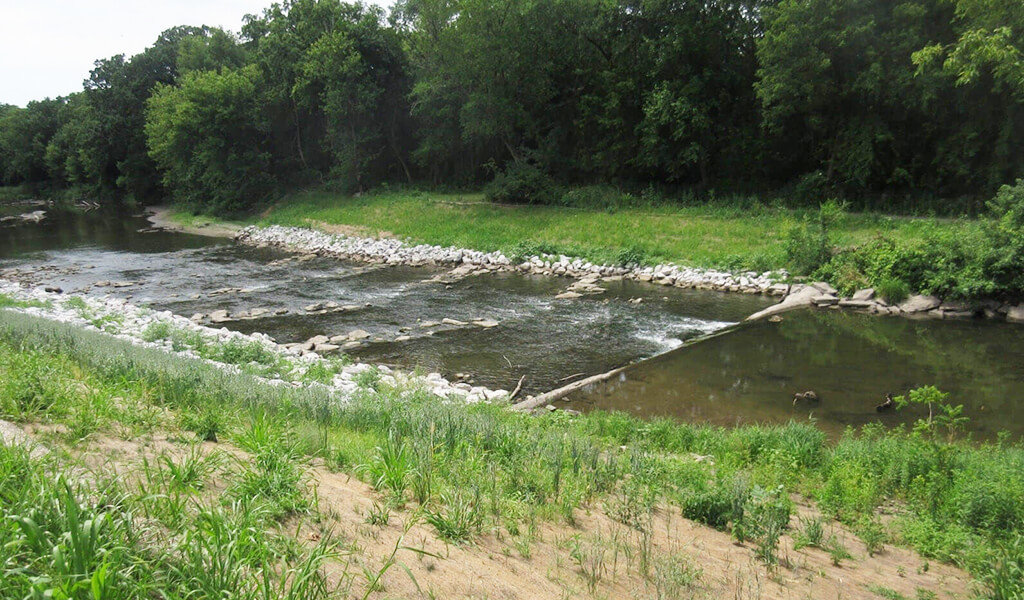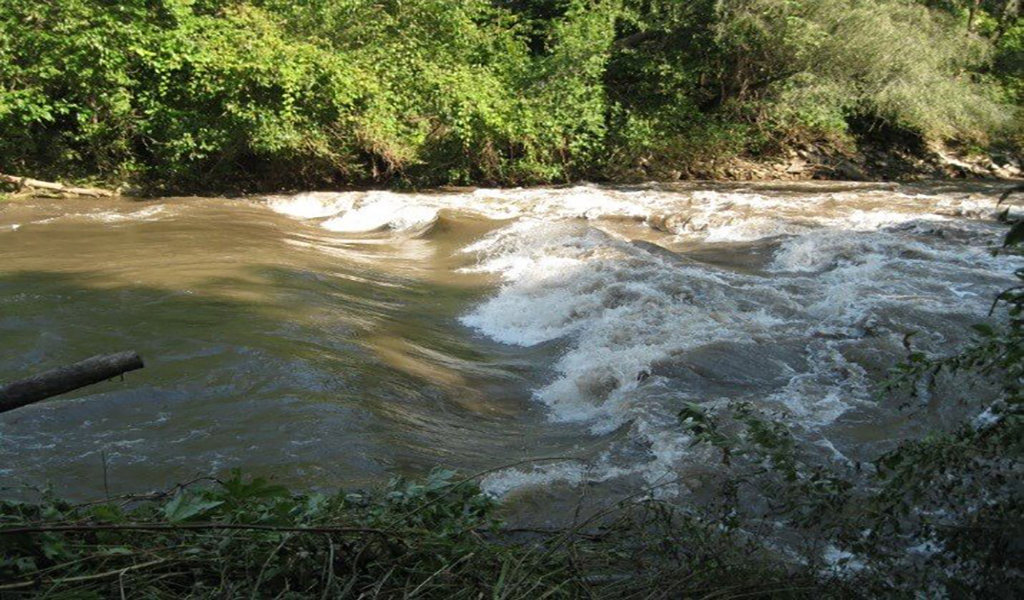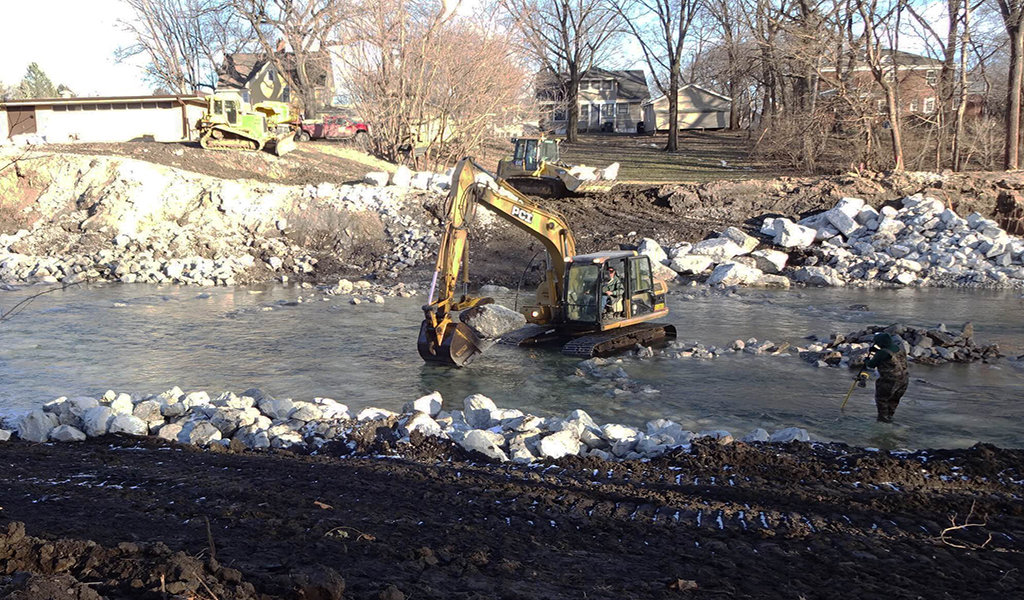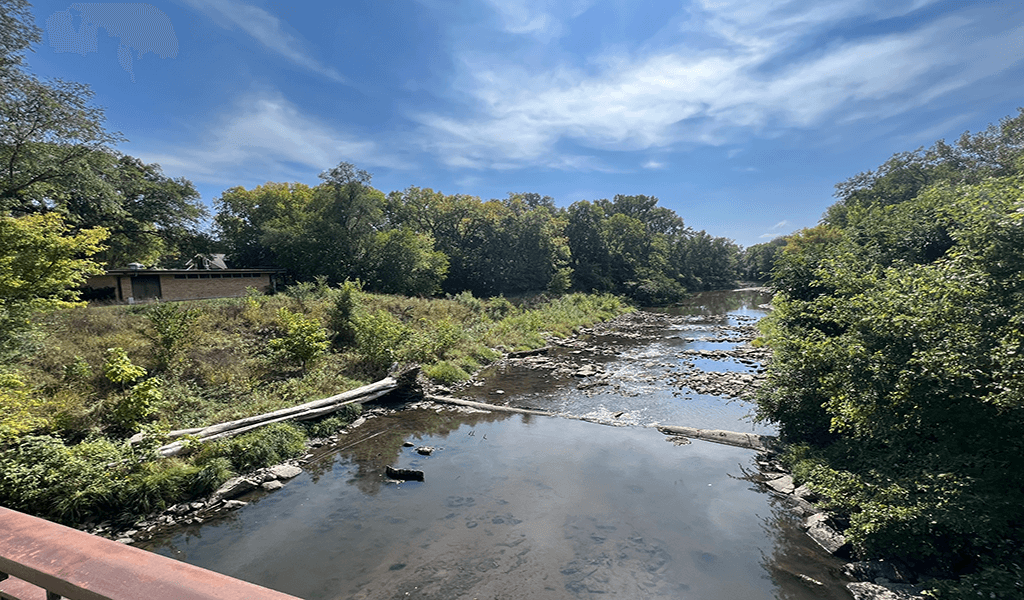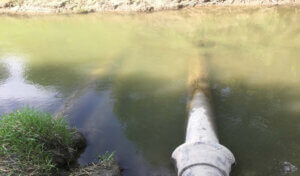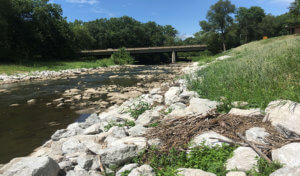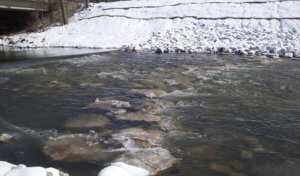
Severe Streambank Erosion Requires Mitigation Efforts
Meandering through Central Iowa, Ioway Creek, formally known as Squaw Creek, is a 42-mile-long tributary that empties into the South Skunk River on the southeast side of Ames. Due to the waterway’s steep banks, highly erodible soils, and volatile flooding events, significant streambank erosion had occurred over many years. The erosion had progressed to the point that it threatened the stability of a 24-inch water main running under the creek near the Lincoln Way Bridge.
This pipeline transports potable water to serve approximately 18,000 residents in the area along with the entire region containing Iowa State University. Previous attempts to control the erosion issue in this highly flood-prone region were unsuccessful, prompting the Ames city leaders to seek a sustainable, long-term solution. Snyder & Associates was contracted to recommend engineering techniques that could stabilize the creek banks, in turn protecting the existing water main.
Adjustments Made in Planning Phase Produce Added Safety Features
Throughout the analysis and planning phase, the project evolved into a more extensive undertaking, addressing safety concerns regarding a low-head dam located in the area. The dam created circular currents that compounded the streambank erosion, impeded fish passage, and posed a drowning hazard. This adjustment was proved necessary as two kayakers narrowly survived a life-threatening situation after being sucked into the dam’s undertow. Occurring just before the project’s completion, this timely incident drew further attention to the safety hazards posed by low-head dams.
Working with the Federal Emergency Management Agency (FEMA) for over six years, Hazard Mitigation Grant Program (HMGP) funding was secured to finance the streambank stabilization project and mitigate the threat posed by the dam. The many streambank stabilization efforts our team incorporated involved:
- Flattening both the east and west bank of the creek
- Incorporating a low-flow bench to reduce flow velocities and bank pressure
- Protecting lower banks with a stone revetment
- Reinforcing upper banks with erosion control mat, native vegetation, and live stakes
Rock Arch Rapids: An Alternative to Complete Dam Removal
While city leaders desired the complete removal of the low-head dam, a scour analysis performed by the Snyder & Associates team indicated the dam protects the piers of the Lincoln Way Bridge and another water main immediately upstream. To meet the client’s request for complete dam removal while also producing a stable mitigation option, our experts were challenged with creating an innovative alternative.
Our team determined the construction of rock arch rapids would be perfectly suited for this location. Rock arch rapids are a series of steps that gradually transition water flowing downstream from the dam to meet channel elevation. The stream section where a wall-like concrete dam once stood, now features a gradual stretch of rock barriers. This solution slowed the flow of the stream, reduced erosion on the banks, and eliminated the roller (or boil) below the dam. By implementing this tiered structure, our team was able to improve safety for recreational stream users and create a series of pools that allow fish to migrate upstream.
Once completed, this project successfully protected city infrastructure, improved stream functions, and stabilized the streambank. Also, the outcome helped improve recreational safety, restore stream connectivity, and enhance the aquatic and riparian habitat in the area. Partnerships between the City of Ames, state and federal regulatory agencies, and other interested stakeholders helped drive the success, leading to the project being highlighted during the 11th Annual Iowa Water Conference.
